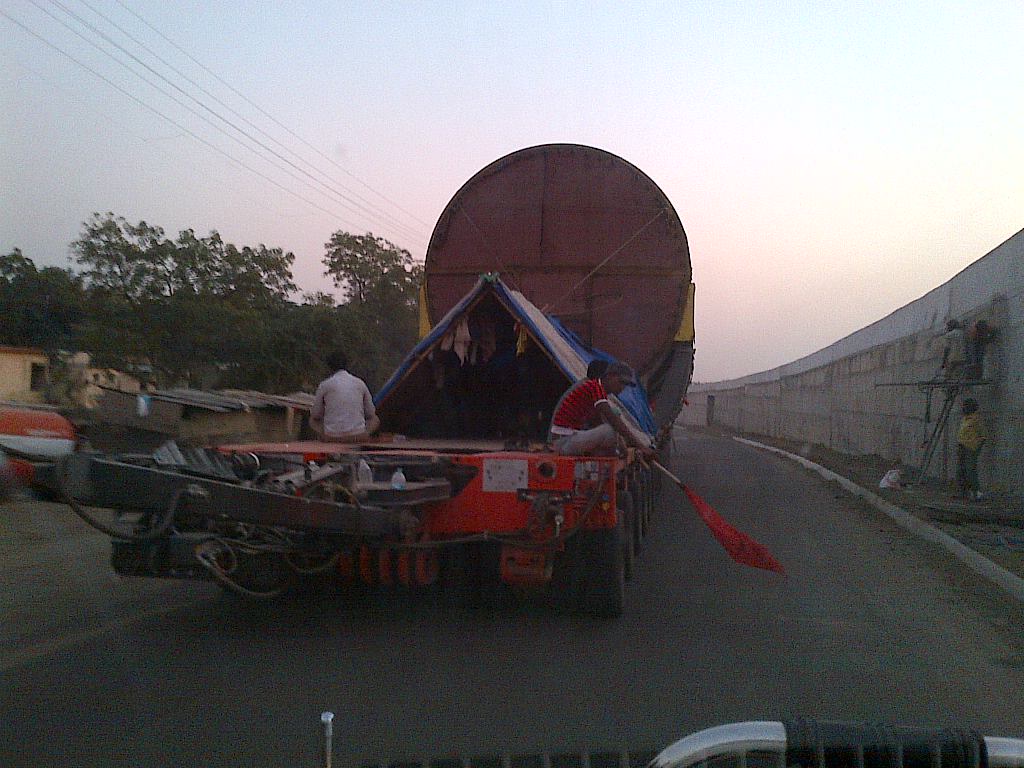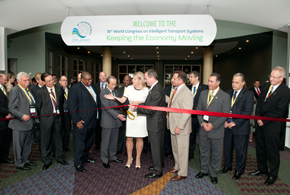Government may change way road contracts are awarded
November 21, 2011
The government may change the way it awards road projects that it finances itself, in an attempt to make the bidding process more transparent.
The highways ministry, the National Highways Authority of India (NHAI) and the Planning Commission held a series of meetings recently to consider allowing contractors to carry out engineering work as well under so-called engineering, procurement and construction (EPC) projects, two officials from NHAI and the Planning Commission said, requesting anonymity.
Contractors typically execute only procurement and construction under EPC contracts, while engineering and design are done by government-contracted consultancies.
The government’s preferred method of awarding road contracts is the build, operate and transfer (BOT) mode, under which the bid winner finances, constructs and maintains a road for a specified “concession period”. The developer collects tolls or is paid an annuity by the government for the concession period.
Projects bid out as EPC contracts are typically those deemed unattractive for the private sector because they lie in areas that are either insurgency-hit or low in traffic.
The 12th Five-Year Plan, which gets underway in 2012, allocates more than 20,000km of highways to be bid out as EPC projects.
Contractors currently make their bids on the basis of costs incurred for every material that goes into road construction. Officials said this makes it easy for them to overcharge the government.
The Planning Commission now wants to award such contracts on a turnkey basis, under which the lowest bidder will be awarded the contract and will be responsible for building the road and maintaining it for a specified period, said the NHAI official mentioned above.
Analysts said handing over engineering work to private contractors may lead to fresh problems for the government.
As all roads constructed as EPC projects are handed over to the government a few years after construction, contractors could cut corners on engineering work, said Parvesh Minocha, managing director of Feedback Infrastructure Services, an infrastructure services company.
Minocha said that as concession tenures for BOT contracts are much longer, contractors deliver high-quality engineering and design works on such contracts.
To make EPC projects more attractive for contractors, the government should package smaller and less-profitable stretches of two-laned roads or service roads to be given on EPC contracts with lucrative expressways or highways to be given on BOT contracts, Minocha said.
Source: www.livemint.com
How to tell where a driver is from?
November 21, 2011
One hand on wheel, one hand out of window : Chicago
One hand on wheel, one hand on horn : New York
One hand on wheel, one hand on newspaper, foot solidly on accelerator : Boston
Booth hands on wheel, eyes shut, both feet on brake, quivering in terror : Ohio, but driving in California
Both hands in air, gesturing, both feet on accelerator, head turned to talk to someone in back seat : Italy
One hand on horn, one hand on greeting, one ear on dell phone, one ear listening to loud music, foot on accelerator, eyes on female pedestrians, in conversation with someone in the next car : Welcome to India
🙂 🙂
If you visit a good Dhaba on Highway
November 12, 2011

Visualize this : You are cruising along in your car along the wide lanes of a highway, feeling slightly weary from the strain of travel. Suddenly a tantalizingly familiar smell hits your nose as you pass by. You hit the brakes and enter a ramshackle place with plastic chairs arranged around a few half broken tables, with a boy or two running around to do your bidding. Welcome to this place and this is none other than the Dhaba.
The ‘Dhaba culture’ has enchanted everyone at some point or another. Be it the peace of resting your head on the ‘khatiya’ or the enthusiastic gulping down of ‘chaach’ and of course, beer and chicken and tandoori roti. Vegetarian do not miss out on the pleasure of a Dhaba either; the paneer and dals fascinate everybody.
 The Dhaba tradition began with the intention of helping out truck drivers rest, eat meals and refill their trucks. They served Punjabi food on wooden cots and catered to truck drivers constantly plying outside city limits. Soon this popular habit turned into a tourist attraction. Now, we have students taking road trips to go and eat at that one Dhaba that serves hot parathas on that chilly highway! The food still remains as tasty as ever and yet continues to be inexpensive. Enthralling isn’t it?
The Dhaba tradition began with the intention of helping out truck drivers rest, eat meals and refill their trucks. They served Punjabi food on wooden cots and catered to truck drivers constantly plying outside city limits. Soon this popular habit turned into a tourist attraction. Now, we have students taking road trips to go and eat at that one Dhaba that serves hot parathas on that chilly highway! The food still remains as tasty as ever and yet continues to be inexpensive. Enthralling isn’t it?
Dhabas price their food much cheaper than any other restaurants on the highways. Businesses of the dhabas spike up on weekends and those are the busy days. Business and work is low on all other days. Dhabas are now noticing recurring customers. Such a culture never existed before. Students and families have now become loyal customers and Dhaba owners pride over such visitors.
One of the show Highway on my plate depicts the food culture on highways
Source: http://goodtimes.ndtv.com
Annual National Conference on Road Infrastructure in India 2011
November 10, 2011

The theme of the conference is Planning, Designing, Modernization & Investment for Indian Roads to match International standards.
Updated program and more details or logon to http://ibkmedia.com/events/index.php?event_id=3
The Road Infrastructure In India 2011 conference provides an excellent platform for decision makers from the government and service/technology providers to come and interact. The conference through its technical sessions will discuss and deliberate the key issues in the Indian Road sector:
Topics
- Challenges in land acquisition for road construction in India
- Challenges in Public Private Participation (PPP) – Build Operate and Transfer (BOT) toll mode or BOT (Annuity) mode
- Current Scenario on Roads in Karnataka State (State Initiatives in PPP)
- Output and Performance Based Road Contracts – An alternate PPP Contracting Model
- Challenges to build 20 km of road per day under the five year plan (2017-22)
- Advance Technology Electronic Toll Collection (ETC)
- Role of IT in Road Construction
- Traffic Management by Designing of roads, Flyovers
- Updates on NHDP-iv, or NHAI
- Opportunities & Challenge PMGSY in Next 3-4 year’s
- PPP of Special Purpose Vehicle (SPV) Projects for Port & rail Connectivity
- Challenges in Achieving high Return on Investment (ROI) through PPP
- New technology & Equipments for road Construction
- Ecological Road construction
- Challenges in construction and maintenance of roads in India
- Challenges for Sustainable Rural Road Development
Confirm speakers for the conference
- Shri Nitin R.Gokarn, Joint Secretary, Ministry of Road Transport & Highways
- Mr. Sudhir Hosingh, CEO-Roads, Reliance Infrastructure Limited
- Prof M.N.Sree Hari, Advisor to Gov. Karnataka T.T & Infrastructure
- Mr. Satish Pendse, President – Highbar Technologies Limited -Hindustan Construction Company
- Mr. Alon Globus, Director, i-Tec-India
- Mr. N.K.Sinha, Chairman International Road federation Indian Chapter
- Shri Sudhir Thakre, Secretary, PMGSY
- Shri Ajay Saxsena, PPP Expert, Asian Development Bank (ADB)
- Mr. N.N.Kumar, Dy. Chairman, JNPT
- Mr. Rajesh Rohatgi, Sr. Transport Specialist, World Bank
- Mr. Brijesh Koshal, MD, Daiwa Capital Market
- Mr. Kamal Bali, President & CEO, LeeBoy India Construction Equipment (P) Ltd
- Mr. Sachin Bhatia, CEO, Metro Infrasys p Ltd.
- Ms. Archana, Prof. RV College of Engineering
- Dr. S. L Dhingra, Chair Professor, IIT Mumbai etc.
Date & Venue for Road Infrastructure In India 2011 Conference
Day: Tuesday, 06th December 2011
Timings: 9.30 AM onwards
Venue : Hotel, JW Marriott Juhu Tara Road Mumbai
In addition to the above around 150 high profile delegates comprising decision makers from central, state governments and Private professionals, consultants, Road Developers, national & international funding organizations, Technology & Equipment suppliers, Contractors, service providers, research & academic institutes will discuss, deliberate and share their knowledge and experiences.
For more Information, You can email to [email protected]
We are sure that the participation of delegates from your organization will not only update them on the current issues, emerging business opportunities in Road Sector in India but also provide them the ample opportunities to meet with the national and international experts to discuss, share and learn from their the experiences.
Looking forward to receive you at the Road Infrastructure In India 2011 conference.
Source: http://ibkmedia.com
Indian Highway Image
November 10, 2011
18th World Congress on Intelligent Transport systems-Orlando
November 4, 2011
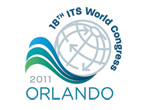 The Intelligent Transportation Society of America, ERTICO-ITS Europe, and ITS Asia-Pacific has commensed the world’s leading transportation policy makers, technology, and business professionals in Orlando, Florida, from October 16-20, 2011 for the 18th World Congress on Intelligent Transport Systems, which featured ITS America’s Annual Meeting & Exposition.
The Intelligent Transportation Society of America, ERTICO-ITS Europe, and ITS Asia-Pacific has commensed the world’s leading transportation policy makers, technology, and business professionals in Orlando, Florida, from October 16-20, 2011 for the 18th World Congress on Intelligent Transport Systems, which featured ITS America’s Annual Meeting & Exposition.
Indian Tollway’s Views From Orlando, Florida, USA
One senses a certain quiet excitement, a kind of diffused hurriedness about the place. And lots of people. With attendance estimates between 8,000 and 10,000, one thing that is not apparent are empty exhibit floor isles.
The five-day ITSWC conference began on Sunday, October 16th with an evening kickoff event that featured Florida Governor Rick Scott and General Motors VP of R&D Alan Taub. While their speeches conveyed all the usual bits about reducing congestion, a cleaner planet, increasing safety and ITS funding, the emerging theme is decidedly high-tech. with emphasis on real-time telematics, in-vehicle ITS, and connected vehicle technology.
The conference offered more than 300 sessions, focused on topics such as highway & vehicle safety, next generation traveler information, consumer apps for in-vehicle and smart devices, congestion management, performance measurement, analytics, eco-management and many more.
The exhibition hall comprised two main areas. The first was a single hall layout of more than 35,000 square meters of exhibition space with more than 200 companies manning stalls. The second area was an impressive outdoor pavilion themed into four areas: Safety Village, Environment Village, Pricing Village, and Mobility Village. These areas featured live demonstrations of connected-vehicle technologies, smartphone driver awareness, first responder vehicle movement, V2I/V2V, collision avoidance through smart systems, intermodal tracking & clearance, interoperability, and a host of other live demos.
One of the most fascinating aspects of this conference was that it was perhaps the most clear indicator of ITS industry trajectory of any ITS conference this year. As expected, there are all the traditional components of ITS here, from software & communication systems to cameras, detection equipment, and VMS. These are certainly the backbone of ITS systems. But the clear stand-out in emerging components of ITS is Connected Vehicle Technology (CVT).
CVT may be seen as the next generation of ITS, one which will allow vehicles and roadway environments to communicated directly with each other. The US DOT estimates that CVT has the potential to mitigate (at least to some degree) a huge number of driver related crash scenarios – as much as 81%. In addition to reducing accident rates, CVT has the promise of lowering driving costs, reducing traffic congestion, and lowering individual vehicle emissions.
Few pieces on the same has been shown .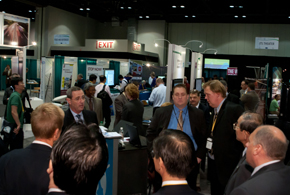
Source: Greg Bartlett, Guest Editor
ITS Guys Take On Khardung La Pass !
November 1, 2011

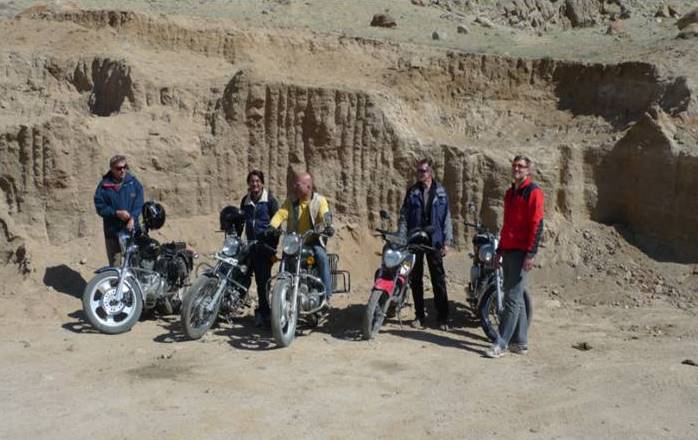

 Us folks in the Transportation Industry, particularly in ITS and Toll Roads are often overlooked in the Adventure Department of life. I know what you’re thinking as you read this. You’re thinking, “hey wait a minute, I’m in the transpo biz and I’ve done adventurous things.”
Us folks in the Transportation Industry, particularly in ITS and Toll Roads are often overlooked in the Adventure Department of life. I know what you’re thinking as you read this. You’re thinking, “hey wait a minute, I’m in the transpo biz and I’ve done adventurous things.”
But let’s be honest here. We are professionals and business people, educated and desk-oriented. That’s what we do. Maybe we played hockey or cricket once upon a time. And maybe we rank above swashbuckling accountants on the excitement scale, but most of the time we talk about roads, toll lanes, congestion mitigation, and all the gadgets that make our systems work. A site visit to a road project doesn’t exactly make a riveting story.
Ah, but once in a while we have an opportunity to do something “outside the box”. Something adventurous…a little dangerous, even. And when opportunity knocks, sometimes wonderful things happen when we answer the door.
Senior management from Ledstar Inc., Neolite ZKW Lightings Pvt. Ltd. and Metro Infrasys Pvt. Ltd. answered, and walked through that door last month, when they took a trip to northern India. Casting aside the comforts of home, hotels, personal drivers and central a/c and heating, they ventured to Leh, where they slept in yurts, toured ancient monasteries, and climbed and hiked along peaks ranging from 4,000 to 4,800 meters.
But the highlight of the trip was an excursion from Leh to Khardung La, the highest motorable road in the world.
The group rented motorcycles in town, gassed up and were ready to go! But wait; one of the group was having trouble with a new pair of gloves bought from a nearby shop. What was going on? Struggle, pull, struggle, tug… no luck. No fear, however: With the amount of collective engineering, business, and financial brainpower in the group they were certain to get to the bottom of the problem. Eureka! The shop owner has sold two left-hand gloves! After tracking down the shop, exchanging the offending glove, and a bit of zany antics to keep the convoy of motorcycles together through town (and trying not to get lost), the intrepid gang of five made it out of town and upward along the Leh-Khardung road.
The initial going was easy and pleasant, with beautiful panoramic views of the valley below and smooth dry pavement under the wheels. The road got a bit more rough nearing the South Pollu, where the group stopped at the checkpoint. Permits were checked and identifications were verified by friendly military personnel, cups of hot chai were enjoyed, and then it was back in the saddle once more.
A few hundred meters past the checkpoint, the pavement ended and the potholes began, and the going got a lot bumpier and slower. Constant vigilance was essential, because as you are bouncing over the rough road, you have to make sure your motorcycle doesn’t stray too close to the edge of the road. There are no high curbs, fences or guiderails so a wrong move can send you down, down, down. At the same time, you have to be very careful going around the hair-pin turns –as one of the group found out! He shall remain nameless here, but while rounding a corner he met an oncoming vehicle, skidded, and dumped the motorcycle just in time. Fortunately, he, his motorcycle, and the oncoming Scorpio stayed on the road and (also important) didn’t hit each other. The only injuries sustained were a slightly bruised ego and a sprained self-confidence.
The temperature dropped, the wind picked up, and the air got thinner. The brave gang of fellows pressed on, and a couple of hours later, like an apparition coming into focus, there was the top of the pass! The road leveled out and the group parked along the ridge of Khardung La. At that elevation (18,380 feet, or 5,600m), there is only about half the oxygen in the air compared to sea level. So walking up the slight incline and climbing on the wall to have pictures taken next to the official Khardung La sign felt like a strenuous hike! High fives all around, then into the warmth of the restaurant (well, a little café, really). Steaming hot ramen noodles and chai never tasted so good!
More pictures, high-fives, and a few long moments of quiet appreciation of the breath-taking majesty of the mountains, and it was time to head back down.
A side note here for the curious: When one is at the top of Khardung La and is compelled to answer nature’s call, there is a long line of portable toilets lashed together behind a small military building and secured with aircraft cable. If you are sensitive to heights, do not to look down when inside the porta-potty: they actually jut out over a cliff and it’s a long, long way down…
Back down our brave five went, motorcycles not needing much throttle for this half of the trip, avoiding a few convoys of trucks and the occasional freshly fallen rock in the road. By the time they reached the paved portion of the roadway, a certain member of the group could no longer contain his enthusiasm and began racing downhill, the goal of which was to reach 100km/hr. Disappointingly, the straight-aways were too short and the bike was too underpowered, and a maximum speed of 98km/hr was recorded for posterity. Then, having left his fellow travellers behind, he turned around and raced back up at top speed, hurtling around corners at such a low angle that foot pegs were scuffed a few times. Not being satisfied with the near-one-hundred mark, the same cycle was repeated again and again, until the outskirts of Leh beckoned and sanity had to be restored.
Who said transportation guys were boring?
Photos
[nggallery id=3]
Author’s Note: I wish to thank Sachin Bhatia of Metro Infrasys for organizing this fantastic trip. He’s a supreme gentleman with a ready laugh and spirit of adventure. Thanks, Sachin, for memories to last a lifetime.
Source: Mr. Greg Bartlett (Guest Editor)
